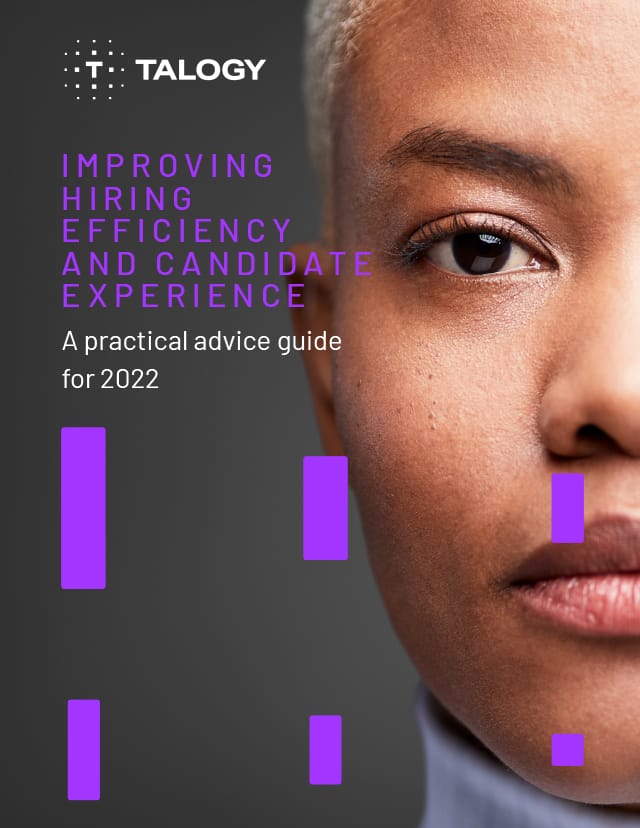Written by Alanna Harrington, Research Consultant
Many organisations have set targets in 2021 to increase the diversity of their workforce and/or leadership. However, to be able to increase diversity, it is first necessary to actually be able to attract a diverse pool of applicants.
A candidate’s perception of the attractiveness of an organisation is influenced by many factors, including job advertisements, recruiter characteristics, positive experiences when visiting the office or site (or taking a video tour), and the efficiency of the recruitment process. This information helps them form judgments about the attractiveness of an organisation, as well as their perceived level of person-organisation fit (P-O fit), also known as culture fit. P-O fit or culture fit is known as the level of congruence between an individual’s values and those of the organisation. Both contribute to applicants’ intention to apply for a job.
Here are three ways to make your organisation attractive to a diverse pool of applicants:
1. Show, don’t tell
Many articles on this topic will advise you to clearly communicate your commitment to diversity throughout the recruitment process in order to attract a diverse pool of applicants. However, the evidence around whether an organisation is more attractive to ethnic minorities when it outlines its commitment to diversity is mixed.
For example, in a 2013 study, workers were divided into groups and asked to review recruitment materials that either highlighted the organisation’s commitment to work life balance, diversity, or career development. Neither sex nor race was predictive of perceived organisational attractiveness in the condition that highlighted diversity.
So, why is it that this makes very little difference?
A possible reason for this is that diversity statements may be perceived as exaggerated or outright dishonest. And this might not be far from the truth – in 2017, 87% of all Fortune 500 companies had a dedicated webpage expressing their commitment to diversity, but only 3% of those companies reported their employee demographics.
A recent study (Wilton et al., 2020) found that perceived diversity dishonesty led to lower feelings of fit, and that evidence-based cues of diversity (e.g., diverse organisational charts, and Glassdoor reviews describing the diversity climate) had more impact on individuals’ perceptions of the company than expressed cues (e.g., diversity statements). There is also evidence to suggest that displaying imagery of a diverse range of employees, particularly in leadership positions, has a positive impact on organisational attractiveness.
What we can learn from this is that it is important that to go beyond stating your commitment to diversity. If you state that your company values diversity, go a step further and demonstrate how you are working towards greater diversity, and be honest and transparent about how things are currently. What is your current demographic breakdown? Do you have D&I training for employees and specifically everyone involved in recruitment? Do you have a blind hiring process? Do you have a target for minority or female representation on the staff or senior leadership? Do you gather feedback from employees to understand their experience and how you can make your culture more inclusive?
2. Focus within
While talent attraction strategies are often understandably focused on the image presented externally by the organisation, when it comes to diversity, you also need to focus internally on building and maintaining a pro-diversity and inclusive culture and climate.
As mentioned, applicants’ impressions of the organisation will often be influenced by evidence-based cues. Women and minorities are also more likely to be influenced by the organisation’s reputation for diversity than other groups (Lee & Zhang, 2020). While you can, to some extent, conduct impression management through your career website and recruitment process, what you have less control over is informal information conveyed by existing or former employees. Information spreads very quickly on social media, and one alleged incident of discriminatory or exclusive behaviour can be enough to irreversibly damage your diversity reputation.
3. Watch your wording
Finally, research has shown that wording in job advertisements can trigger stereotype threat. Stereotype threat occurs when individuals fear they are at risk of confirming negative stereotypes about their group. For example, Wille & Derous (2017) found that women were less likely to apply to job ads that required a calm and unemotional person, as women generally perceived that they are stereotyped as being overly emotional. This effect was particularly pronounced when the requirement was phrased in a dispositional manner e.g., a calm person rather than in behavioural manner, e.g., someone who remains calm under pressure – although both forms influenced women’s intentions to apply. Another study by the same researchers found that ethnic minority job seekers were less attracted to job ads including a requirement about which they feel their group has a negative stereotype.
To reduce or eliminate this effect, consider having all job application-related information reviewed by a diverse panel of job incumbents. Try to phrase requirements in a behavioural manner rather than dispositional to reduce the impact.
One final piece of advice is to manage your expectations. While utilising these strategies can help you to increase the diversity of your applicant pool, don’t expect a sudden change overnight. As an employer, you can make positive changes, but there are still larger societal factors that will influence the number of applicants from particular groups. Research suggests that minorities are more likely to seek work in public sector organisations, which they deem to be less threatening, and to take roles for which they are overqualified.
According to a survey conducted by Salesforce, 80% of business professionals believe businesses have a responsibility to make a positive societal impact, but only 36% reported that their organisations were actively working to achieve diversity. It’s up to employers to close that gap.
In our new resource, How to Build a Diverse and Inclusive Workplace (part two of our Ultimate Guide Series), we’ll share:
- Five core principles to integrate D&I into your organisation based on creating real and lasting behavioural change
- Actions to help ensure your talent tech fosters D&I so you eliminate systemic bias, not create it
- Our inclusive leadership model which enables leaders to start on their path to modelling greater inclusion
References:
Wilton, L. S., Bell, A. N., Vahradyan, M., & Kaiser, C. R. 2020 Show Don’t Tell: Diversity Dishonesty Harms Racial/Ethnic Minorities at Work. Personality and Social Psychology Bulletin, 0146167219897149.
Wille, L., & Derous, E. 1 Getting the words right: When wording of job ads affects ethnic minorities’ application decisions. Management Communication Quarterly, 31(4), 533-558.
Lee, D., & Zhang, Y. 2020 The value of public organisations’ diversity reputation in women’s and minorities’ job choice decisions. Public Management Review, 1-20.



